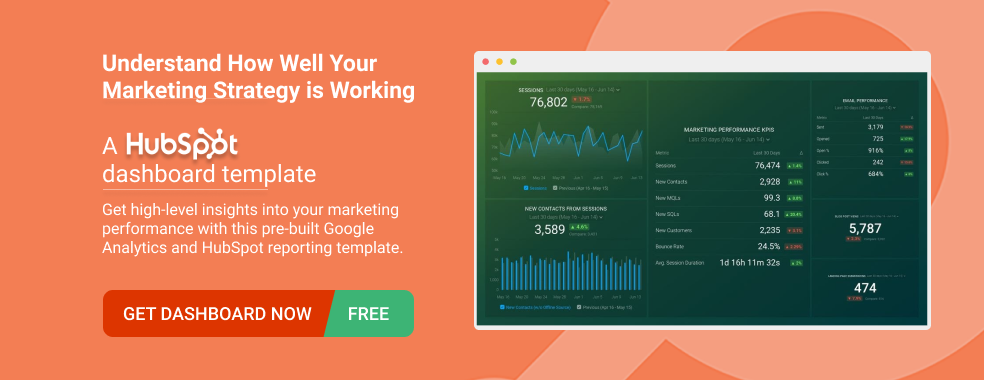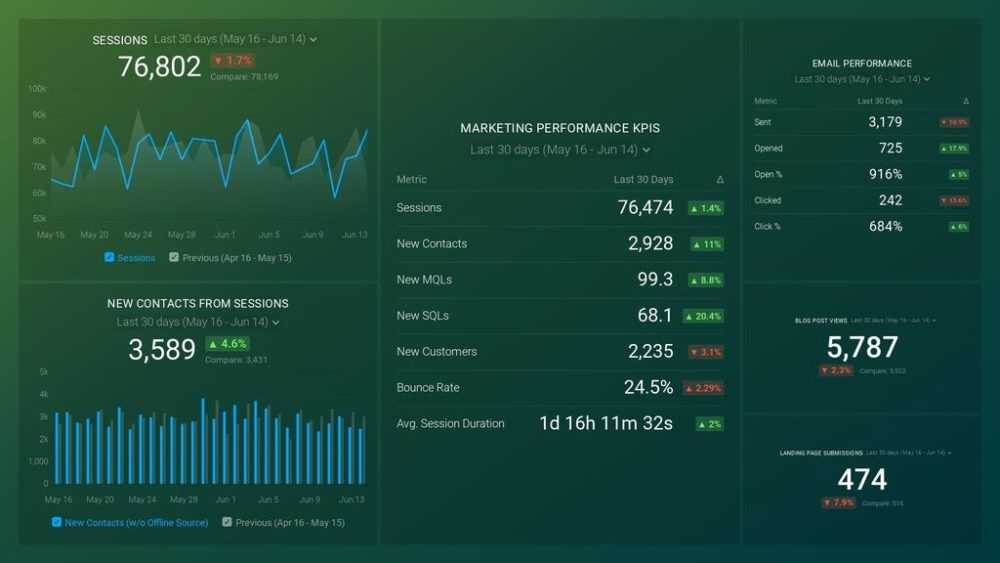

To see what Databox can do for you, including how it helps you track and visualize your performance data in real-time, check out our home page. Click here.
The main problem with writing only formal reports in your company is that you won’t be able to quickly and efficiently communicate important urgent messages and the latest updates to your management and team leaders.
You always have strict rules and formats that you have to follow, which will disable you from conveying crucial information in a timely manner.
The biggest issue is that your management needs that information in order to make the day-to-day decisions and create efficient strategies.
This problem can easily be solved by implementing informal reports.
Informal reports are shorter reports that are used for quickly communicating recent findings and information to internal members of the company. They are much faster to write since you won’t have to follow any strict guidelines.
In this article, we are going to walk you through what informal reports are, why you should use them, and how to create them.

Informal reporting is a type of business reporting where the information presented doesn’t need to be formatted or structured in any specific way. These reports include critical but brief information.
They are typically much shorter than formal reports and have lesser sections. In recent years, informal reporting has become one of the most common types of business reporting within companies.
While formal reporting is a great way to present some important findings, not every piece of information has to be formally presented. In some situations, it’s better to convey data and information quickly rather than formally. This is why many employees will overlook the formal structure and use informal reports to maintain quick and efficient communication.
By using informal reporting, you can communicate your findings without having to waste time on specific rules, formats, or structures.
However, these reports are only useful for internal purposes. Conveying information through informal reports to external parties can make your business look unprofessional.
Informal business reports are the shortest and simplest types of business reports, and they are used for presenting certain information in a brief manner. They usually come in the form of person-to-person communication and they do not have any strict formation or structure.
You can create these types of reports rather quickly and you won’t need to do any comprehensive planning. They are typically from one to ten pages long and have fewer sections compared to formal reports. For this reason, they are also referred to as short reports.
Informal reports also don’t strictly follow any writing style – the information is presented in a natural language.
The main goal of informal reports is to quickly communicate important messages to internal members of the company. Adding any sort of personal comment or opinion is unnecessary.
When it comes to the nature of the report, they are either informational or analytical.
Informational informal reports include routine information that should allow company members to acquire additional insight into specific cases. The sections are typically introduction, main findings, and conclusion.
On the other hand, analytical informal reports provide answers and solutions to specific issues. It includes all the same sections as the informational report, with the addition of a ‘recommendations’ section.
In the context of business operations, for example, running scheduled reports in Salesforce can also be a valuable tool for generating both informational and analytical informal Salesforce reports, facilitating efficient communication within your organization.
The main purpose of informal reporting is to quickly communicate relevant findings and information to internal members of the company.
Informal business reports include information and data that can be critical for making day-to-day decisions and developing operational strategies.
Employees who create informal reports only focus on making the information clear and understandable, they don’t waste time on following any structures that could delay the conveyance of the message.
Formal reports have a similar objective, but when creating them it is impossible to overlook the structure and formatting guidelines.
By implementing only formal reports, companies risk losing the efficiency and quickness that informal reports bring to the table.
Like most marketers and marketing managers, you want to know how well your efforts are translating into results each month. How much traffic and new contact conversions do you get? How many new contacts do you get from organic sessions? How are your email campaigns performing? How well are your landing pages converting? You might have to scramble to put all of this together in a single report, but now you can have it all at your fingertips in a single Databox dashboard.
Our Marketing Overview Dashboard includes data from Google Analytics 4 and HubSpot Marketing with key performance metrics like:
Now you can benefit from the experience of our Google Analytics and HubSpot Marketing experts, who have put together a plug-and-play Databox template that contains all the essential metrics for monitoring your leads. It’s simple to implement and start using as a standalone dashboard or in marketing reports, and best of all, it’s free!

You can easily set it up in just a few clicks – no coding required.
To set up the dashboard, follow these 3 simple steps:
Step 1: Get the template
Step 2: Connect your HubSpot and Google Analytics 4 accounts with Databox.
Step 3: Watch your dashboard populate in seconds.